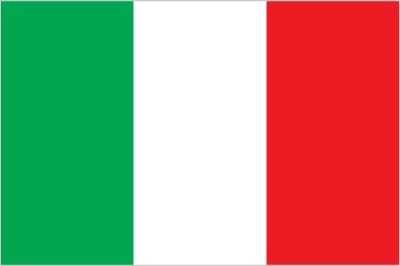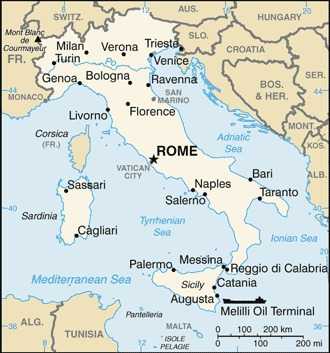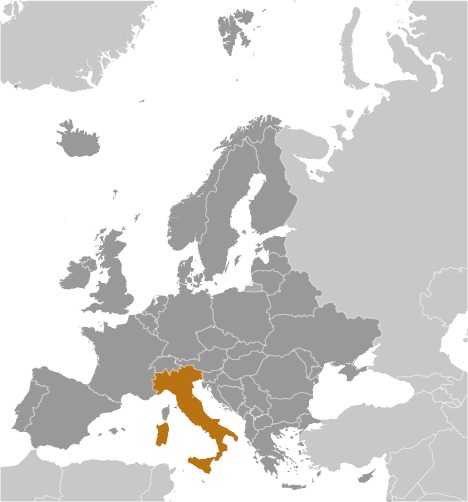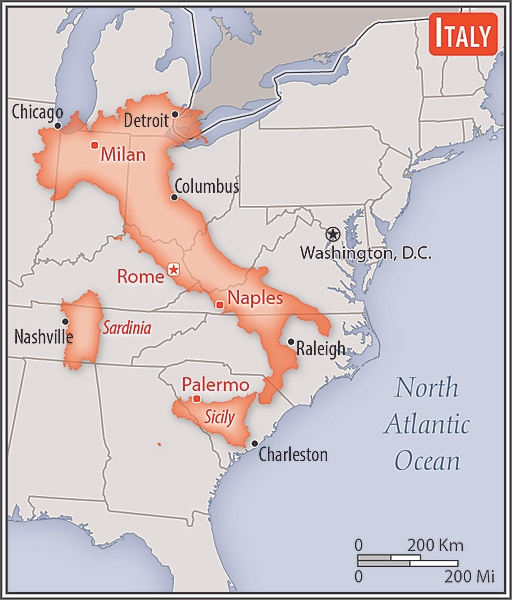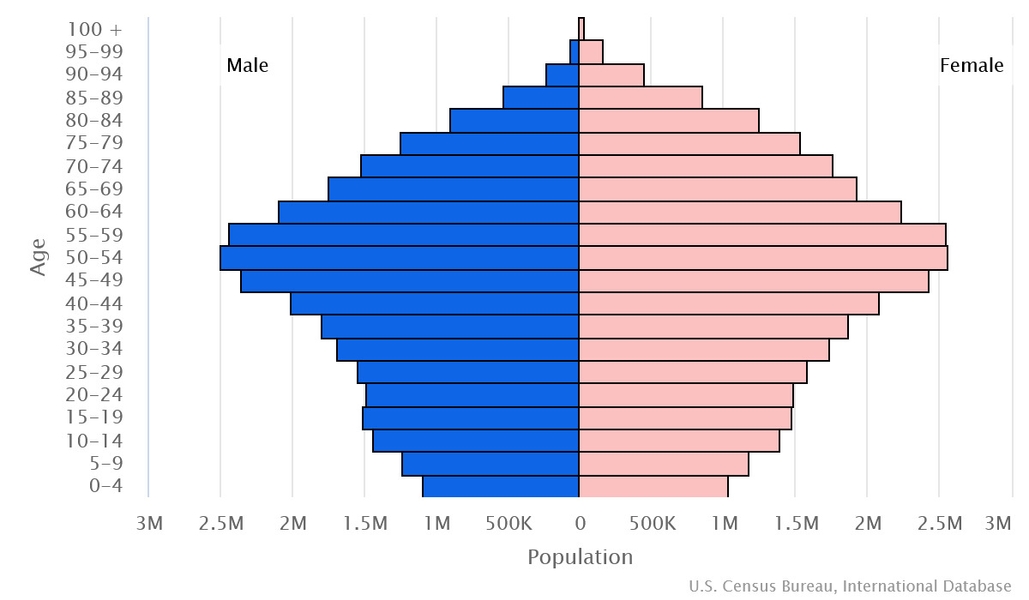Introduction
Visit the Definitions and Notes page to view a description of each topic.
Geography
People and Society
Population
comparison rankings: female 24; male 25; total 24
Languages
Median age
comparison ranking: total 5
Population growth rate
comparison ranking: 201
Birth rate
comparison ranking: 222
Death rate
comparison ranking: 22
Net migration rate
comparison ranking: 33
Maternal mortality ratio
comparison ranking: 165
Infant mortality rate
comparison ranking: total 207
Life expectancy at birth
comparison ranking: total population 19
Total fertility rate
comparison ranking: 219
Obesity - adult prevalence rate
comparison ranking: 108
Alcohol consumption per capita
comparison ranking: total 51
Tobacco use
comparison ranking: total 64
Education expenditures
comparison ranking: 106
Environment
Revenue from forest resources
comparison ranking: 150
Revenue from coal
comparison ranking: 85
Government
Economy
Real GDP (purchasing power parity)
comparison ranking: 11
Real GDP growth rate
comparison ranking: 166
Real GDP per capita
comparison ranking: 37
Inflation rate (consumer prices)
comparison ranking: 119
GDP - composition, by sector of origin
comparison rankings: services 58; industry 114; agriculture 160
Industrial production growth rate
comparison ranking: 154
Labor force
comparison ranking: 26
Unemployment rate
comparison ranking: 142
Youth unemployment rate (ages 15-24)
comparison ranking: total 52
Gini Index coefficient - distribution of family income
comparison ranking: 80
Public debt
comparison ranking: 7
Taxes and other revenues
comparison ranking: 48
Current account balance
comparison ranking: 27
Reserves of foreign exchange and gold
comparison ranking: 17
Energy
Electricity
comparison rankings: transmission/distribution losses 188; imports 4; exports 40; consumption 14; installed generating capacity 11
Carbon dioxide emissions
comparison ranking: total emissions 18
Energy consumption per capita
comparison ranking: 54
Communications
Telephones - fixed lines
comparison ranking: total subscriptions 13
Telephones - mobile cellular
comparison ranking: total subscriptions 22
Internet users
comparison ranking: total 22
Broadband - fixed subscriptions
comparison ranking: total 12
Transportation
Merchant marine
comparison ranking: total 18
Military and Security
Military expenditures
comparison ranking: 95

